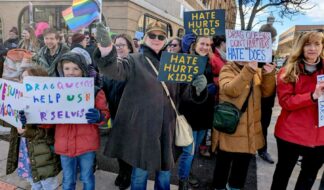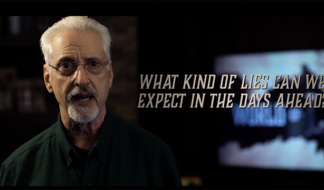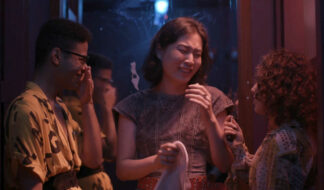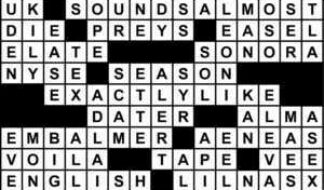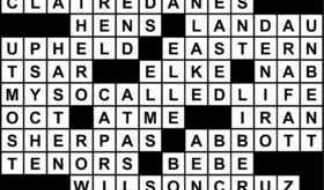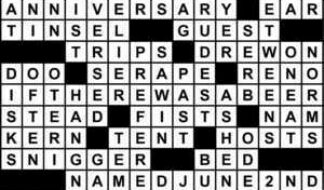by Jessica Carreras
Symbols are as much a part of society as language. And like language, symbols and their meanings differ depending on the group, region or community that is using them.
A rainbow flag. An upside-down pink triangle. A labrys. An equal sign. To the LGBT community, symbols and slogans have served numerous purposes over time, whether to mark a "safe space," to announce one's sexuality, or to break the silence. And though time has worn on and the wants and needs of the community have changed, some symbols and slogans have lived through decades and generations.
A 'symbolic' history
Ann Arbor activist and retired head of the University of Michigan LGBT center Jim Toy remembers a time when symbols and slogans were a necessity in LGBT life – to identify, to collaborate and to fight for rights.
"The first (slogan) that we used around here in Ann Arbor had to do with a regional conference in 1973 and it was 'Gay is Mental Health'" Toy recalled. "It had to do with the American Psychiatric Association removing us from their list of psychopathologies."
A popular symbol of the time, Toy said, was the butterfly – used by the Ann Arbor Gay and Lesbian Federation in the early 1970s to let people know they were having a picnic gathering.
Toy remembers T-shirts that said Faggot Revolution, buttons emblazoned with the words Silence = Death and banners boasting androgynous figures and fists to show LGBT's fervor for their rights.
But even before the empowered community began to draw attention to their sexuality and their rights, they used symbols to hide from a society that would ridicule, imprison and even kill them for being who they were.
Queer historian and PhD candidate Cookie Wolner has spent her time in college learning about the various symbols used throughout time by gays to notify each other of their allegiance.
"Gay men had a lot of symbols," Wolner explained. "One of them was wearing a red tie. Or asking someone the time was a symbol. Of course, sometimes that would get people in trouble who really just wanted to know what time it was. Of course, there were the hanky codes. I think different types of flowers had different meanings."
Wearing a red tie or a green carnation, said Wolner, meant that a person was homosexual. Hanky codes, however, are much more detailed. The codes traditionally involve wearing various colors or symbols to let prospective sexual partners know what they were interested in or looking for. The codes range from being a top or a bottom to enjoying sex outdoors or connoting fetishes. Though they are used less in recent years, certain LGBT subcultures still rely on these codes in noisy bar settings when cruising for a date.
Another symbol Wolner has studied extensively is the upside-down pink triangle. Originally, Nazis used the symbol during World War II to mark homosexuals in their concentration camps. For this reason, the triangle is now used by LGBT people both to honor those lost in the war and as an identification symbol.
During the 1980s, the triangle was often paired with slogans to symbolize breaking the silence around the taboo subject of HIV/AIDS. It has also been used in numerous pop culture references, including the musical comedy "The Rocky Horror Picture Show" and the song "Pink Triangle" by the alternative rock band Weezer.
Other symbols used throughout time included a purple handprint, the lambda symbol and a purple rhinoceros.
Over the rainbow?
Perhaps the longest-used and best-known symbol for the gay community, however, is the rainbow flag.
First designed by Gilber Baker for the 1978 San Francisco Gay Freedom Celebration, the flag premiered then is quite different from the one commonly seen today – and was loaded with meaning.
Originally, the flag had eight stripes. After the aqua and hot pink stripes were removed, the flag became the six-striped one that is seen everywhere in gay culture today. Each stripe has a different meaning: Red stands for life, orange is healing, yellow is the sun, green is nature, blue stands for harmony and purple is the soul.
The original eight-striped flag can be seen in the Castro district of San Francisco, and at the LGBT Community Center in New York City.
Offshoots of the rainbow flag have been created, including variations by the bisexual, bear, leather and transgender communities. Using different colors and adding their own symbols, subsections of the LGBT community have made rainbow flags their own.
But now, many claim that younger generations have grown tired of the rainbow.
Toy said he understands their sentiments, but wonders what a symbol for a new generation would look like. "It may well be that people are continually looking for something new, such as in 'fashion' clothing. That could certainly be," he said. "But the people who say 'we're sick and tired of it', what are they coming up with in its place?"
Laura Sorensen, who has worked with youth as a volunteer and as the former Youth Services Coordinator at Affirmations, said that queer youth of today are expressing themselves in all sorts of different ways.
"I think that while youth have embraced popular symbols – especially the rainbow – almost to code themselves as gay or queer, I think that they're really doing it also through their fashion," Sorensen mused. "They're finding really expressive ways, really stylized dressing and things like that that serve as a notice to other teenagers that they might find a friend or an ally."
She added that LGBT teens are coming up with their own symbols, phrases and identifiers. "I think that if people are listening, they'll see there's a lot of new phrases, new terminology, new words or words that are being reclaimed that younger people are using to describe themselves."
For Wolner, the rainbow is tacky – simple as that. "I've always found rainbow stickers to be kind of cheesy," she said. "I would never wear anything with a rainbow on it. It's totally not my aesthetic. If I saw a cute girl wearing something with a rainbow on it, I'd go 'she's kind of cute, but she's wearing a rainbow.'"
The need remains
However, Wolner clarified, that doesn't mean she won't crack a smile if she sees a rainbow in a restaurant window. "The Ann Arbor Brewing Company has a rainbow flag sticker on their door, and the first time I went in there, I thought it was kind of cool," she admitted. "It's just some random pub…and you don't see that in every restaurant in downtown Ann Arbor, even though I think of it as a pretty safe place."
Rainbow symbols in businesses were often used in the past to notify gay consumers that they were friendly or supportive of the cause. The symbol let LGBT people know that they were safe at a bookstore, restaurant or apartment complex.
And, over time, in schools.
Toy has worked for years with implementing safe trainings and programs in public schools. In the trainings, teachers or counselors who vow to protect and nurture LGBT students are given rainbow or equality stickers to put onto their doors.
"They're easily visible – especially if you're walking down the hallway and the door is dark brown and you can see a rainbow sticker on an office window," Toy explained. "I think that pragmatically, it's helpful, because it's easily visible and recognizable."
Likewise, he said it is always welcome to see a rainbow sticker in a window. "People might perceive it as less necessary," he said, "but I'm always happy when I'm walking down the street to see a symbol in a store window."
Sorensen added that though queer youth see LGBT symbols in a different way, they still welcome their use to let them know that they're not alone.
"It's been my experience with queer youth that when we're on field trips or in the car, if they were to see a rainbow sticker on another car, they'd get really excited," she said. "Or they'd go out of their way to tell me that the second year French teacher in their high school has a rainbow on their door, even if they've never met that teacher. It can be really isolating in high school and so, especially for youth who don't know a lot of LGBT people, it can really exciting to see."
Even if it's a little outdated.
